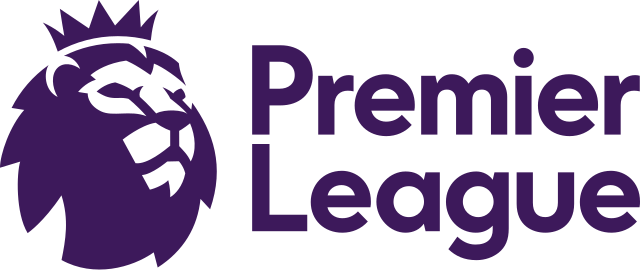Don’t let bad design ruin good intentions
Heart, hands and head need to connect cohesively
When designing a product or service, the designer and users differ in the amount of distance traveled. Designers start with inspiration and move to implementation. The user’s world start and ends at implementation.
The journey from inspiration to implementation is tricky. I look at lessons learnt from 3 examples where bad design defeated good intentions.

The Heart-Hands disconnect
The Literacy Lift!
The New Zealand government promotes Maori literacy by encouraging organizations to have initiatives like Maori week etc. to increase awareness of Maori language and culture. An organization, housed in a multi-storey building, decided to add Maori lift floor announcements. Lift passengers could hear and learn Maori counting as part of their daily up/down.
Great idea. But what happened in practice?
For a start, people heard two announcements playing at every floor. 50% extra voice input! For a person travelling from one floor to another, no big deal. Now add in the core use case: rush hour when the lift is full of people and stopping on every floor. Imagine the cacophony.
Maori translation takes longer to say than the English one. Both cannot be completed by the time a floor arrives and the door opens.
The absence of a visual floor indicator in the elevator further compounded the issue. By the time the English announcement for a floor was heard, the doors were already open, causing people to rush towards the exit. By the time those at the back started moving towards the door, it had already begun to close, leading some to miss their floor entirely. Chaos!
Instead of a means to learn a new language, the announcement literally became extra noise, and a nuisance even.
Operational reality clouds intent.
The literacy lift did not travel far (pun intended). Poor implementation weakened a worthwhile cause (language uplift). Having bilingual signage near the elevator buttons could‘ve been a more effective approach, allowing individuals to recognize the floors they frequently visit and use this knowledge to gradually enhance their understanding of Maori. Alternatively, reversing the order of announcements to present English first would ensure that individuals were aware when their floor was reached (core use case satisfied), allowing them to relax and be better placed to pay attention to, and learn, Maori counting.
The faster route to slow!
Digitization is an operational and strategic imperative for organizations. There are huge benefits of digitizing existing services. Digital initiatives though have also had their share of fails.
One organization “automated” paper forms by moving to PDF versions. This was done to reduce staff burden, while saving costs and also the environment.
The theory was a good. In practice, things got worse! The workflow before this “automation” was 3 steps: obtain hard copy form, fill form, send to processing department (by internal mail or email). The workflow after this “automation” ballooned to 5 steps: download form, print form, fill form, scan form to email, email to processing department. What made matters worse was that the processing department still printed the forms, as they kept hard copy records!
The semi-automated option was worse than either extreme. A paper-based solution (current state) or a truly automated form (online submission not PDF) were both better than what was delivered.
The (congested) Digital Highway!
Another organization suffered a similar fate when introducing an online form. The form was meant to add convenience for customers and reduce volume for the over-worked call centre. A great proposition.
In practice, due to a lack of end-to-end integration of the online form, the process became worse. People using the online form usually had to follow up via phone. It was faster to phone than complete a task via the online form! Who benefited? No one. Staff still dealt with the same volume. Customers who availed the online “facility” now faced even longer processing times!
Trying to make things faster without optimizing the whole led to a worse experience than doing nothing. In fact, the original process, albeit seemingly archaic, functioned better than the newer and seemingly more modern process.
Simplicity is the most difficult thing to secure in this world; it is the last limit of experience and the last effort of genius — George Sand
Implications for designers
1. Empathize
For any design initiative, the greater the quality of empathetic enquiry, the better the design, ceteris paribus. A set of standard building blocks can help us get started in building empathy:
- Outcomes, outputs, objectives (or a MOST analysis)
- Stakeholder map (or stakeholder analysis for larger initiatives)
- Use case profiles
With these in place, we can build our user perspective progressively. The vast literature on HCD offers many other relevant techniques. The methods vary but the fundamental remains the same: understand the objective, understand the user and define the missing link. Easier said than done for sure but any structured start is better than random efforts.
2. Optimize the whole
Processes that overlook the complete journey or the end-to-end flow of people, materials, and information are bound to result in poor design, leading to inevitable time and cost penalties.
3. Design for reality
Test the design. Run or simulate a live or near live situation. Consider different and real use cases. Remember, we’re dealing with real people with real problems. Develop practical solutions that are effective.
4. Remember what really matters
This is the most important point. In the aforementioned examples, the intentions were commendable. Intention and execution however seemed to take two different routes. There was a disconnect between what was being done and the rationale for doing it. This led to a disparity between the desired and the actual result.
To ensure good intentions get good results, we need to connect the Heart to the Hands. Heart and Hands connect via the Head.
The Head needs to play the crucial role of reminding us constantly why we’re doing something in the first place!
When the Heart, Head and Hands are in sync, good intentions will transform into great outcomes.







